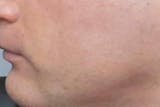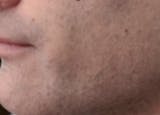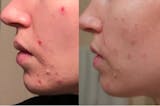There are multiple ways to manage eczema symptoms without the use of medical therapies.
Alternative treatments can supplement conventional therapies such as medications and moisturizers which may not be suitable for all.
Eczema, affecting millions of individuals globally, is a recurring skin condition typified by red, itchy, and inflamed skin outbreaks. The degree and length of these flare-ups are influenced by three key factors:
While conventional remedies like topical steroids and moisturizers are often the go-to treatments, they may not always be suitable for all skin types, or potent enough to fully manage the condition. This is where alternative eczema treatments come in.
These therapies tackle the condition from the standpoint of the three core factors listed above, offering an array of strategies beyond the first-line treatments.
JUMP TO SECTION:
Overview of Alternative Remedies for Eczema
Alternative and complementary therapies for eczema are designed to address the three main pillars of the condition: immune system response, trigger control, and skin barrier strength.
Balancing Immune Activity with Alternative Therapies
The immune system is multifaceted, and there are several alternative ways to calm and control it:
Dietary Changes: As eczema is linked to inflammation, an anti-inflammatory diet rich in fruits, vegetables, and omega-3 fatty acids could be beneficial.
Mind-Body Techniques: Mindfulness, yoga, and stress management techniques can reduce the psychological stress that often exacerbates eczema flare-ups.
Acupuncture and Traditional Chinese Medicine (TCM): In TCM, eczema is viewed as an imbalance of the body's energy or "Qi". Acupuncture aims to restore this balance, potentially alleviating symptoms.
Homeopathy: A holistic system of medicine, homeopathy uses minute doses of natural substances to stimulate the body's self-healing mechanism.
Biofeedback and Hypnosis: These approaches work by helping individuals gain control over physiological responses to stress, potentially reducing the severity of eczema symptoms.
Exercise: Regular physical activity can help manage stress and boost the immune system, possibly reducing eczema flare-ups.
You can find more details about some of these options in our articles on Diet, Mental Health, and Exercise.
Alternative Methods for Eczema Trigger Control
Managing triggers that can induce or worsen a flare is crucial. The primary approach is to identify the trigger either through an allergy test or tracking symptoms.
It can take some time for those approaches to find and eliminate the trigger. A few alternative and complementary strategies to consider are:
Vacuuming: Regular vacuuming can help reduce dust mites, a common trigger for many people with eczema. Use a vacuum with a HEPA filter for the best results.
Maintaining Humidity: Dry air can aggravate eczema symptoms. Using a humidifier to maintain an optimal humidity level in your home can help keep your skin hydrated and less susceptible to flare-ups.
Washing: How and when you wash can influence your eczema. Avoid hot baths or showers and harsh soaps, which can strip your skin of its natural oils. Opt for lukewarm water and mild, fragrance-free cleansers instead.
Skin care ingredients: Many skincare products contain ingredients that can irritate sensitive, eczema-prone skin. Always read the label and select products with fewer allergens. Avoid products with fragrances, dyes, and harsh chemicals.
Aroma removal: Scented products such as air fresheners, candles, or perfumes can trigger eczema flare-ups in some individuals. Opt for fragrance-free products and keep your indoor environment well-ventilated to minimize exposure to potentially irritating aromas.
For a deeper exploration of these topics, please read our articles on allergies and intolerances, washing, avoiding triggers, triggers you may not have thought of, and how to find the best moisturizers for your eczema. They provide valuable insights and practical tips that can make a real difference in your journey towards better eczema management.
Strengthening the Skin Barrier: Alternative Treatments
In individuals with eczema, the skin barrier function is often compromised. This barrier, composed of lipids and proteins, protects the skin from environmental irritants and allergens while retaining moisture.
When this barrier is disrupted, the skin becomes more permeable to irritants, leading to inflammation and eczema symptoms.
Alternative treatments can aid in either restoring a healthy skin barrier or offering supplementary protection while your skin barrier recuperates.
In the next section, we will delve deeper into complementary skin barrier therapies for eczema.
Enhancing the Skin Barrier: Complementary Therapies for Eczema
Regular application of moisturizers is the common first step in both helping the skin barrier strengthen and providing an additional layer of barrier between your skin and the triggers in the world.
In our article on moisturizers we dive deep into how to identify if the product hydrates to reduce cracking and create a protective layer on the skin's surface or if it helps the skin barrier repair and strengthen.
Several complementary and alternative therapies can help bolster your moisturizer and your skin barrier while you are healing.
Making Smart Clothing Choices
The materials you wear can aggravate the skin and cause eczema to flare up. Opting for soothing materials which do not harbor triggers can help the skin recover. Materials with finer fibers are more soothing, such as cotton silk or merino wool.(JAR 2020)
Clothing can act as a "second skin," offering additional protection from environmental triggers and harmful UV rays, and preventing excessive scratching.
Another consideration for clothing is the temperature. Wearing breathable materials and layering can protect against extreme temperature changes, as overheating can lead to sweating and exacerbation of eczema symptoms.(CAS 2006)
Maintaining Short Fingernails
Scratching can damage the skin barrier, leading to increased permeability and worsening eczema symptoms. Your fingernails also harbor dirt and microorganisms that, when scratching, can find their way below the skin barrier to induce flaring.
It can be so difficult to eliminate scratching completely, especially while asleep. A simple lifestyle change which can reduce the damage to the skin is maintaining short fingernails. Cut them every week or more often if your nails grow fast. File the cut edge to soften it and further reduce scratching damage.
Consider wearing cotton gloves at night to prevent unconscious scratching during sleep.
Recognizing and Reducing Scratching
Another method to reduce the damage from scratching is to learn to recognize the scratching motions sooner. Scratching can become so habitual that eczema sufferers are not even aware they are doing it.
By practicing self-awareness, mindfulness and focussing on being present, it is possible to become aware of the scratching sooner and therefore reduce the amount of scratching taking place.
Sometimes, someone may be totally aware that they are scratching but feel powerless and unable to stop. The desire to scratch can outweigh the motivation to stop scratching.
Perhaps the individual has suffered from intense itches for a long duration of time, they are feeling mentally fatigued and out of control. Perhaps the individual is feeling helpless and hopeless.
There are some tools to help from behavioral therapy:
Find a mantra or other trigger. For example, you could repeat “I am in control” or snap a rubberband on your wrist to trigger your brain to focus elsewhere.
Focus on doing something else with your hands.
Remember 50% less scratching is a win. Trying to eradicate all scratching can lead to guilt for that one time you scratched your skin. You may even feel: “well I’m scratching now, I’ve failed so I may as well carry on”. The healthier perspective is to aim for minimal scratching so catching yourself scratching is an opportunity to catch yourself and reduce scratching rather than a failure.
The Benefits of Wet Wraps
This technique involves applying a moisturizer to the affected area, covering it with a wet bandage, and then wrapping a dry bandage over the top. Wet wraps can provide intense, targeted hydration and have a cooling effect, which can be particularly soothing during a flare-up.
To make a wet wrap for a particular patch of skin, follow these steps:
Clean the affected area
Apply moisturizer
Dampen a clean bandage and wrap it around the affected, be careful not to wrap too tight
Wrap the damp bandage with a dry bandage
Leave the wrap on for several hours
The damp cloth cools the skin whilst trapping the moisturizer and water in, allowing the skin to hydrate.(FIS 2012)(CAS 2006)
Be careful to avoid making the following mistakes, do not:
Apply topical steroids before wrapping a patch of eczema, this will increase the dose absorbed.
Wrap infected skin.
Wrapping broken skin or scabs
Use dirty bandages or wraps
Ice Packs
The inflammatory process initiates the healing process for damaged tissue. During an allergic reaction, there is no actual damage and the inflammation is an over reaction of the immune system.
As described in the symptoms page, when eczema is inflamed, it feels warm and there is increased blood flow to the area. Therefore, by reducing the inflammation present, the severity of the reaction can be calmed down.
The cooling effect of an ice pack held against the skin constricts the blood vessels and subsequently the histamine levels in-situ depreciate. This limits the severity of the allergic reaction and reduces itchiness and damage to the area.(LIU 2018)
Interestingly, menthol stimulates cooling sensation without actually reducing the temperature and has still been shown to reduce itching. (BRO 1995)
Exploring the World of Alternative Eczema Treatments
The exploration of alternative eczema treatments opens up a world of possibilities for managing this complex condition. From mindfulness techniques to maintaining a healthy skin barrier to wearing the right clothes for your situation, these approaches offer hope for those seeking solutions beyond traditional treatments.
However, remember that these alternative and complementary therapies should be used judiciously and in consultation with a healthcare provider. The ultimate goal is to find a combination of treatments that work best for you, helping you lead a comfortable and fulfilling life.
Share your experiences with us! Tell us what has and hasn’t worked for you. What did we miss in this article that you've found personally impactful? Your insights can help others better understand and manage their eczema.



